9 Bugs That Look Like Termites: A Helpful Guide for Homeowners
Did you know that there are “bugs that look like termites”? It might be complicated and challenging to distinguish between them.Termites, those tiny insects that love chewing through wood, can cause serious damage to homes. However, to adequately defend your house, it is crucial to educate yourself about these look-alikes.
We’ll look at several common insects that mimic termites in this post. By understanding their unique features and habits, you’ll be able to distinguish harmless insects from potential threats. With this knowledge, you can take the right actions and seek professional assistance when needed to keep your home safe from any unwelcome guests. So, let’s embark on this fascinating journey into the world of bugs that mimic termites and equip ourselves with the tools to safeguard our properties.
What are Termites?
The order Isoptera includes social insects like termites. Due to their comparable size and social behavior to ants, they are tiny, pale, and sometimes mistaken for ants. These wood-destroying insects play a crucial role in nature by breaking down dead plant material, like wood and leaf litter, into organic matter, which enriches the soil.
However, termites can become a significant problem when they infest buildings and structures, causing extensive damage.
Key Characteristics of Termites:
Appearance:
Termites typically have straight bodies with soft exoskeletons, and they are usually pale or light brown in color.
Social Structure:
Large termite colonies made up of many castes, including soldiers, reproductive individuals (kings and queens), and workers, exist.
Diet:
They primarily feed on cellulose found in wood and other plant materials, making them a potential threat to wooden structures and furniture.
Nesting Habits:
Termites construct elaborate nests or mounds to house their colonies, which can be located both underground and above ground.
Termites are often divided into subterranean, drywood, and dampwood species, each with distinct preferences for nesting and food sources. When dealing with a termite infestation, it’s essential to identify the specific termite species correctly for effective control and management.
What are Bugs?
The term “bugs” is a common colloquial name used to refer to various insects. In scientific terms, they belong to the class Insecta, which is one of the most diverse and numerous groups of animals on Earth. Insects play critical roles in ecosystems, serving as pollinators, decomposers, and as a vital part of the food chain.
They come in a wide range of shapes, sizes, and colors, and they can be found in almost every habitat on the planet.
Key Characteristics of Bugs:
The head, thorax, and abdomen are the three primary body components of insects. They normally have two antennas and six legs.
Wings:
Many insects have wings, though some may be wingless or have reduced wings.
Metamorphosis:
Insects frequently go through metamorphosis, in which they change into several life stages like the egg, larva (caterpillar or grub), pupa (cocoon), and adult.
Diet:
Insects have diverse feeding habits, including herbivores (plant-eaters), carnivores (predators), and omnivores (eating both plants and animals).
Bugs can be classified into various orders, such as Coleoptera (beetles), Lepidoptera (butterflies and moths), Diptera (flies), Hymenoptera (bees, wasps, and ants), and more. Each order encompasses numerous species with specific adaptations that allow them to thrive in their respective environments. Understanding the characteristics and behaviors of bugs is essential for distinguishing between harmless insects and potentially harmful ones like termites.
Proper identification helps us appreciate the vital roles insects play in the ecosystem while also enabling us to protect our homes and surroundings from any undesirable impacts.
Identifying Termites vs. Look-alike Bugs: Unveiling the Real Culprits
Identifying termites from other insects that resemble them can be a tricky task, bugs that look like termites but aren’t. While some bugs share similar physical characteristics, they have distinct differences in behavior, habits, and potential impact on homes and structures.
Let’s delve into the key factors of bugs that look like termites:
Body Shape and Color:
Termites:
Termites have straight bodies and are usually pale or light brown in color.
Look-alike Bugs:
Bugs that resemble termites, such as carpenter ants and certain beetle species, may have similar body sizes and colors. However, upon closer inspection, their body shapes and features differ significantly.
Antennae Shape:
Termites:
Termites have straight antennae that resemble a string of beads, with no noticeable bends or curves.
Look-alike Bugs:
Some insects that look like termites, such as carpenter ants, have elbowed or bent antennae, making them distinguishable upon observation.
Wings (or Absence of):
Termites:
Termites normally have two sets of equal-sized and-shaped wings. The wings are often longer than the termite’s body.
Look-alike Bugs:
While some look-alike bugs may also have wings, the wing structure, and length can differ from termites. Additionally, some insects within the termite look-alike group may be wingless.
Eating Habits:
Termites:
Termites are cellulose-feeders, meaning they primarily consume wood and other plant materials containing cellulose.
Look-alike Bugs:
Other insects that resemble termites may have varied diets, such as carpenter ants that don’t eat wood but rather excavate it to build their nests. Some beetles may feed on decaying wood but not necessarily on the structural components of buildings.
Nesting Behavior:
Termites:
Termites construct elaborate nests or mounds to house their colonies, and they often prefer dark and damp environments.
Look-alike Bugs:
Look-alike bugs may have different nesting habits. For example, carpenter ants create galleries within the wood to build their nests, while other insects may prefer living in soil or other secluded areas.
Social Structure:
Termites:
Termites have well-defined caste systems in their colonies, including reproductive individuals (kings and queens), laborers, and soldiers among the other castes.
Look-alike Bugs:
Most look-alike bugs do not exhibit the same level of social organization as termites. While some insects, like ants, may live in colonies, their social structures are distinct from termites.
Understanding these differences is crucial for accurate identification and proper pest management. If you suspect termite activity or encounter any look-alike bugs in or around your home, seeking assistance from a pest control professional is recommended. By knowing the unique characteristics of termites and their doppelgängers, you can effectively protect your property and take appropriate measures to maintain a pest-free living environment.
9 Bugs That Look Like Termites: How to Get Rid of them?
Carpenter Ants: A Closer Look

Damage:
One of the bugs that look like termites is Carpenter Ant.Despite not eating wood as termites do, carpenter ants may significantly harm wooden structures. Instead, they form their colonies by digging passageways and nests within the wood. Over time, this tunneling weakens the wood, potentially compromising the structural integrity of buildings and causing costly damage.
Causes of Infestation:
Several factors can attract carpenter ants to your property:
Moisture:
Carpenter ants are drawn to damp and moist areas, as they prefer nesting in wood softened by water damage.
Decaying Wood:
Wood that is already decaying or in contact with soil becomes an ideal nesting site for carpenter ants.
Food Sources:
If your property offers easy access to food, such as sweet or sugary substances, it may attract carpenter ants.
Risks:
Ignoring a carpenter ant infestation can lead to severe consequences:
Structural Damage:
As carpenter ants create tunnels and galleries within the wood, they weaken the building’s structural components, posing safety risks.
Property Value:
A carpenter’s ant infestation can significantly reduce the value of your property if not addressed promptly.
Repeat Infestations:
If the underlying causes of the infestation are not addressed, carpenter ants may return and cause further damage.
Tips for Prevention:
To minimize the risk of carpenter ant infestations, consider these prevention tips:
Moisture Control:
Fix leaks and ensure proper drainage to prevent moisture buildup, as damp wood attracts carpenter ants.
Wood Maintenance:
Regularly inspect and maintain wooden structures, including decks, porches, and fences, to identify any signs of damage.
Seal Entry Points:
To keep carpenter ants from entering your home, seal any holes and crevices in your foundation walls, windows, and doors.
Trim Trees and Shrubs:
Keep plants cut back from your house so that carpenter ants won’t have as many entry points.
Store Firewood Properly:
To reduce the chance that carpenter ants may build a nest in your firewood, keep it out of the way and off the ground.
| Characteristic | Carpenter Ants | Termites |
|---|---|---|
| Physical Appearance | Dark-colored, segmented bodies | Light-colored, soft-bodied insects |
| Antennae | Bent at 90-degree angle | Straight, beaded appearance |
| Waist | Narrow and pinched | Broad and straight |
| Wings (Reproductive) | Only reproductive ants have wings | Both reproductive and worker termites have wings |
| Wings (Size and Shape) | Front wings longer than hind wings | Front and hind wings of equal size and shape |
| Eating Habits | Feed on sweet and sugary substances | Feed on cellulose (wood and plant materials) |
| Damage to Wood | Excavate wood for nesting | Consume wood for nourishment and nesting |
| Nesting Behavior | Nest in moist or decaying wood | Build intricate mud tubes and tunnels |
| Social Structure | Live in colonies with different castes | Live in highly organized caste systems |
| Hazard to Property | Can cause structural damage | Can cause severe and extensive structural damage |
| Prevention Tips | Seal entry points. Remove moisture and decaying wood | Use termite barriers. Maintain proper drainage. Regular inspections. |
Powderpost Beetles: An Insight into the Pest Damage

One of the bugs that look like termites is Wood- boring. Wood-boring insects called powderpost beetles may seriously harm wooden objects like furniture and buildings. When the larvae hatch, they tunnel through the wood to create a network of tunnels. They lay their eggs in the wood’s cracks and fissures. Over time, this activity weakens the wood, turning it into a fine, powdery substance, hence their name “powderpost” beetles.
Causes of Infestation:
Several factors can lead to powderpost beetle infestations:
Wood Quality:
Powderpost beetles prefer to infest hardwoods, especially those with high starch content.
Moisture:
Wood with high moisture content or damp conditions attracts powderpost beetles.
Infested Items:
Bringing infested wooden items into your home can introduce powderpost beetles to your property.
Risks:
Ignoring a powderpost beetle infestation can have various implications:
Structural Damage:
Powderpost beetles can weaken wooden structures and furniture, leading to potential safety hazards.
Property Damage:
Wooden furniture, flooring, and other objects may need to be replaced or repaired at a high expense.
Spread to Other Items:
If not controlled, powderpost beetles can spread to other wooden objects in your home.
Tips for Prevention:
To reduce the risk of powderpost beetle infestations, consider the following preventive measures:
Inspect Wood:
Before purchasing or bringing in wooden items, inspect them carefully for any signs of infestation, such as small holes or fine dust (frass).
Proper Storage:
Store firewood and other wooden items away from your home, preferably elevated off the ground and in a dry area.
Moisture Control:
Ensure proper ventilation and address any moisture issues to prevent the wood from becoming attractive to powderpost beetles.
Seal Cracks:
Seal cracks and crevices in wooden structures to deter beetles from laying their eggs inside.
Treatment:
If you suspect an infestation or notice signs of powderpost beetles, seek professional pest control services for appropriate treatment.
Addressing a powderpost beetle infestation promptly is essential to mitigate the potential damage it can cause. To safeguard your timber assets and maintain a pest-free environment, professional pest management can assist determine the degree of the infestation and apply tailored treatments.
| Characteristic | Powderpost Beetles | Termites |
|---|---|---|
| Physical Appearance | Small, elongated bodies, reddish-brown color | Creamy-white to dark brown, soft-bodied insects |
| Antennae | Antennae are elbowed and segmented | Straight and beaded antennae |
| Waist | Narrow and pinched | Broad and straight |
| Wings (Reproductive) | Both males and females have wings | Both reproductive and worker termites have wings |
| Wings (Size and Shape) | Front wings longer than hind wings | Front and hind wings of equal size and shape |
| Eating Habits | Tunnel into and damage hardwoods | Feed on cellulose (wood and plant materials) |
| Damage to Wood | Tunnel through wood, creating small holes | Consume wood for nourishment and nesting |
| Nesting Behavior | Lay eggs in crevices and cracks within wood | Build intricate mud tubes and tunnels |
| Social Structure | Mostly solitary insects | Live in highly organized caste systems |
| Hazard to Property | Can cause significant damage to wooden structures | Can cause severe and extensive structural damage |
| Prevention Tips | Inspect and treat infested wood. Seal cracks in wood surfaces. | Use termite barriers. Maintain proper drainage. Regular inspections. |
Carpenter Bees: Unveiling their Impact Damage

One of the bugs that look like termites is Carpenter bees.Carpenter bees are solitary bees that can cause damage to wooden structures, such as eaves, decks, fences, and siding. They do not eat wood, but instead, they create perfectly circular entrance holes in the wood to build their nests.
Causes of Infestation:
Several factors can attract carpenter bees to your property:
Wood Type:
Carpenter bees are particularly drawn to unpainted or weathered softwoods, such as cedar, pine, and redwood.
Location:
Areas with direct sunlight and minimal wind exposure are favorable for carpenter bee nesting.
Previous Infestations:
If carpenter bees have nested on your property in the past, they may return to reuse existing tunnels.
Risks:
Ignoring a carpenter bee infestation can lead to various risks:
Structural Damage:
The tunneling activity of carpenter bees weakens the wood, potentially causing long-term structural issues.
Property Value:
The value and visual appeal of your house may decline if an infestation is not handled.
Nesting Aggression:
Female carpenter bees can become aggressive if they feel threatened, stinging to protect their nests.
Tips for Prevention:
To minimize the risk of carpenter bee infestations, consider the following preventive measures:
Paint or Stain Wood:
Apply a coat of paint or stain to wooden structures, as carpenter bees are less likely to nest in treated wood.
Fill Existing Holes:
Fill any existing carpenter bee holes with wood putty to discourage re-infestation.
Seal Cracks and Crevices:
Seal gaps and cracks in wooden surfaces to limit potential nesting sites.
Hang Swings and Birdhouses Away:
If you have swings or birdhouses made of softwood, place them away from your home to attract the bees elsewhere.
Avoid Agitating Bees:
If you encounter carpenter bees, avoid swatting or agitating them, as this may lead to defensive behavior.
It’s essential to deal with a carpenter bee infestation quickly to stop future harm to your home. If you notice signs of carpenter bee activity or suspect an infestation, consider seeking assistance from a professional pest control service. They can help safely and effectively eliminate the bees, protect your property from damage, and implement preventive measures to deter future infestations.
| Characteristic | Carpenter Bees | Termites |
|---|---|---|
| Physical Appearance | Large, robust, with black bodies | Soft-bodied insects, varying in color |
| Wings (Reproductive) | Only females have wings for flying | Both reproductive and worker termites have wings |
| Wings (Size and Shape) | Front wings larger than hind wings | Front and hind wings of equal size and shape |
| Antennae | Elbowed antennae | Straight and beaded antennae |
| Waist | Narrow and pinched | Broad and straight |
| Eating Habits | Feed on nectar and pollen | Feed on cellulose (wood and plant materials) |
| Damage to Wood | Create nesting galleries in wood | Consume wood for nourishment and nesting |
| Nesting Behavior | Nest in existing tunnels or create their galleries | Build intricate mud tubes and tunnels |
| Social Structure | Solitary insects | Live in highly organized caste systems |
| Hazard to Property | Can cause structural damage | Can cause severe and extensive structural damage |
| Prevention Tips | Fill existing holes in wood. Use deterrents on wooden surfaces. | Use termite barriers. Maintain proper drainage. Regular inspections. |
Acrobat Ants: Understanding the Intruder’s Damage
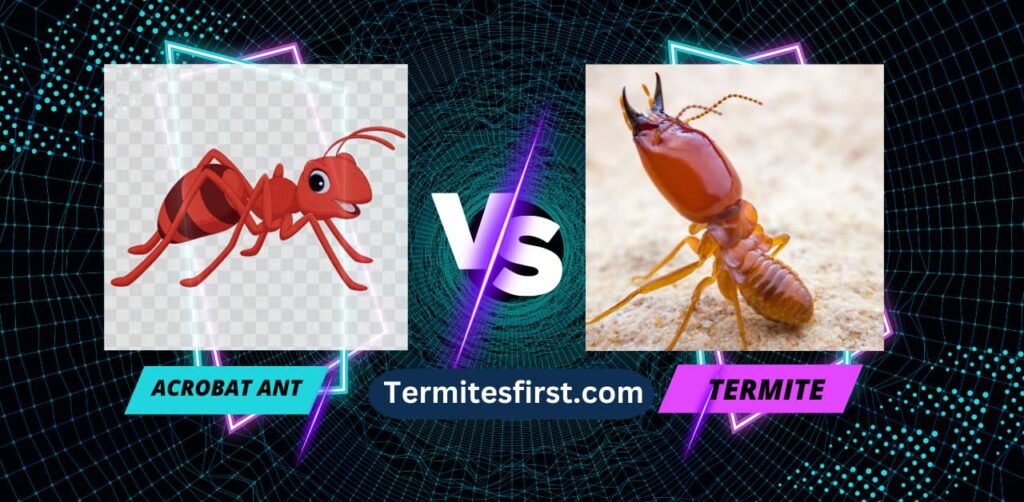
One of the bugs that look like termites is Acrobat ants. Acrobat ants, though not as destructive as termites, can still cause damage to homes and structures. While they do not consume wood as termites do, their nesting activities can weaken wooden elements, such as beams and walls, leading to potential structural problems.
Causes of Infestation:
Several factors can attract acrobat ants to your property: Food Sources: These ants are opportunistic feeders and are attracted to sweet, sugary substances found in kitchens and pantries.
Moisture:
Like many pests, acrobat ants seek out damp environments, making water-damaged wood or areas with leaks more appealing.
Easy Access:
Cracks and gaps in the exterior of buildings provide entry points for acrobat ants.
Risks:
While not as severe as other pests, acrobat ant infestations can pose certain risks: Structural Damage: Over time, their nesting activities can compromise the integrity of wooden structures in your home.
Contamination:
Acrobat ants can contaminate food and surfaces when foraging for sugary substances in kitchens and pantries.
Tips for Prevention:
To reduce the risk of acrobat ant infestations, consider the following preventive measures:
Seal Entry Points:
Inspect and seal any cracks or gaps in the exterior of your home to prevent ant entry.
Remove Food Sources:
Kitchens and pantries should always be spotless and clear of spills or crumbs that can attract acrobat ants.
Moisture Control:
Repair leaks and address any water-damaged areas to discourage ant activity.
Landscaping:
Trim trees and shrubs away from your home to prevent branches from touching the structure, as ants may use them as bridges.
Professional Assistance:
If you have an ongoing ant problem, consider consulting a pest control professional to identify the source and implement effective treatment.
When you see acrobat ant activity, act quickly to stop any harm and keep pests out of your house. Should you suspect an infestation or notice signs of acrobat ants on your property, seeking help from a pest control expert can ensure effective elimination and provide guidance on maintaining a pest-resistant environment.
| Characteristic | Acrobat Ants | Termites |
|---|---|---|
| Physical Appearance | Small to medium-sized ants | Soft-bodied insects, varying in color |
| Antennae | Elbowed antennae | Straight and beaded antennae |
| Waist | Pinched waist | Broad and straight |
| Wings (Reproductive) | Some species have wings for flying | Both reproductive and worker termites have wings |
| Wings (Size and Shape) | Front wings longer than hind wings | Front and hind wings of equal size and shape |
| Eating Habits | Feed on a variety of food sources, including sweet substances | Feed on cellulose (wood and plant materials) |
| Damage to Wood | Nest in moist or decaying wood | Consume wood for nourishment and nesting |
| Nesting Behavior | Create nests in a variety of locations, including trees and structures | Build intricate mud tubes and tunnels |
| Social Structure | Live in colonies with different castes | Live in highly organized caste systems |
| Hazard to Property | Can cause structural damage | Can cause severe and extensive structural damage |
| Prevention Tips | Seal entry points. Remove moisture and decaying wood | Use termite barriers. Maintain proper drainage. Regular inspections. |
Mayflies: Understanding Their Presence Damage

One of the bugs that look like termites is mayflies. It is unknown if mayflies harm buildings, possessions, or residences directly. Unlike some other pests, they do not feed on wood, fabric, or food items. Instead, they are aquatic insects in their nymph stages, and as adults, they have a very short lifespan, typically lasting only a day or two. Mayflies are primarily nuisance insects due to their sheer numbers during their short adult stage.
Causes of Infestation:
Mayflies are not considered pests in the traditional sense, and their presence is not caused by the typical factors associated with infestations. Instead, their population boom is usually linked to their reproductive habits, as they lay eggs in large numbers in bodies of water like rivers and streams.
Risks:
Mayflies do not pose significant risks to human health or property, and they are an essential part of the ecosystem as a food source for other animals, such as fish and birds. However, their massive swarms during their short adult life cycle can be a nuisance, especially when they gather around outdoor lights or water bodies.
Tips for Management:
While mayflies are not harmful, managing their presence can help reduce nuisance and inconvenience: Outdoor Lights: Turn off or dim outdoor lights during peak mayfly emergence to minimize their attraction to the area.
Close Doors and Windows:
To keep mayflies from accessing inside rooms during swarms, keep doors and windows closed.
Clean-up:
Sweep or hose away mayfly carcasses and residue to maintain a tidy outdoor environment.
Since mayflies do not cause damage or harm, they generally do not require any specific pest control measures. Their presence is typically short-lived, and they will naturally disperse as their adult stage comes to an end. By taking simple preventive steps, you can manage their nuisance and continue to appreciate these insects as an essential part of the natural ecosystem.
| Characteristic | Mayflies | Termites |
|---|---|---|
| Physical Appearance | Delicate, slender bodies | Soft-bodied insects, varying in color |
| Antennae | Long, thread-like antennae | Straight and beaded antennae |
| Waist | N/A (No distinct waist) | Broad and straight |
| Wings (Reproductive) | Yes, adults have wings for flying | Both reproductive and worker termites have wings |
| Wings (Size and Shape) | Long, membranous wings | Front and hind wings of equal size and shape |
| Eating Habits | Non-feeding adults (lack functional mouthparts) | Feed on cellulose (wood and plant materials) |
| Damage to Wood | N/A (Do not cause damage to wood) | Consume wood for nourishment and nesting |
| Nesting Behavior | N/A (Eggs laid on water surfaces) | Build intricate mud tubes and tunnels |
| Social Structure | N/A (Live briefly as adults) | Live in highly organized caste systems |
| Hazard to Property | Do not pose any property risks | Can cause severe and extensive structural damage |
| Prevention Tips | N/A (No preventive measures required) | Use termite barriers. Maintain proper drainage. Regular inspections. |
Wood-Boring Beetles: A Closer Look Damage

One of the bugs that look like termites is wood-boring. Insects called wood-boring beetles may harm wooden furniture and buildings. These beetles lay their eggs in crevices and cracks within the wood. As soon as the eggs hatch, the larvae begin to feed on the wood fibers and chew away at the wood, building tunnels. Tunneling weakens the wood over time, causing degradation and structural problems.
Causes of Infestation:
Several factors can lead to wood-boring beetle infestations: Unfinished Wood: Beetles are attracted to unfinished, untreated wood, as it provides an ideal environment for their eggs.
Moisture:
Wood with high moisture content or damp conditions can attract wood-boring beetles.
Infested Wood Sources:
Bringing infested wood or wooden items into your home can introduce beetles to your property.
Risks:
Ignoring a wood-boring beetle infestation can lead to various risks:
Structural Damage:
Wood-boring beetles can weaken wooden structures, leading to potential safety hazards.
Property Damage:
Wooden furniture, flooring, and other objects may need to be replaced or repaired at a high expense.
Spread to Other Items:
If not controlled, wood-boring beetles can spread to other wooden objects in your home.
Tips for Prevention:
To reduce the risk of wood-boring beetle infestations, consider the following preventive measures:
Finish and Seal Wood:
Apply a finish or sealant to wooden structures and furniture to deter beetles from laying their eggs.
Proper Storage:
Store firewood and other wooden items away from your home, preferably elevated off the ground and in a dry area.
Moisture Control:
Ensure proper ventilation and address any moisture issues to prevent the wood from becoming attractive to beetles.
Inspect Wood:
Before purchasing or bringing in wooden items, inspect them carefully for any signs of infestation, such as small holes or fine dust (frass).
Regular Maintenance:
To find any indications of beetle activity, do routine maintenance and inspections on wooden buildings.
It’s crucial to deal with a wood-boring beetle infestation quickly to stop further harm to your home. If you notice signs of beetle activity or suspect an infestation, consider seeking assistance from a professional pest control service. They may give guidance on preventing more infestations, assist in determining the amount of the infestation, and carry out tailored treatments.
| Characteristic | Wood-Boring Beetles | Termites |
|---|---|---|
| Physical Appearance | Small to medium-sized beetles | Soft-bodied insects, varying in color |
| Antennae | Elbowed antennae | Straight and beaded antennae |
| Waist | Pinched waist | Broad and straight |
| Wings (Reproductive) | Both males and females have wings | Both reproductive and worker termites have wings |
| Wings (Size and Shape) | Front wings longer than hind wings | Front and hind wings of equal size and shape |
| Eating Habits | Tunnel into and damage hardwoods | Feed on cellulose (wood and plant materials) |
| Damage to Wood | Tunnel through wood, creating small holes | Consume wood for nourishment and nesting |
| Nesting Behavior | Lay eggs in crevices and cracks within wood | Build intricate mud tubes and tunnels |
| Social Structure | Mostly solitary insects | Live in highly organized caste systems |
| Hazard to Property | Can cause significant damage to wooden structures | Can cause severe and extensive structural damage |
| Prevention Tips | Inspect and treat infested wood. Seal cracks in wood surfaces. | Use termite barriers. Maintain proper drainage. Regular inspections. |
Booklice: Shedding Light on the Tiny Intruders Damage
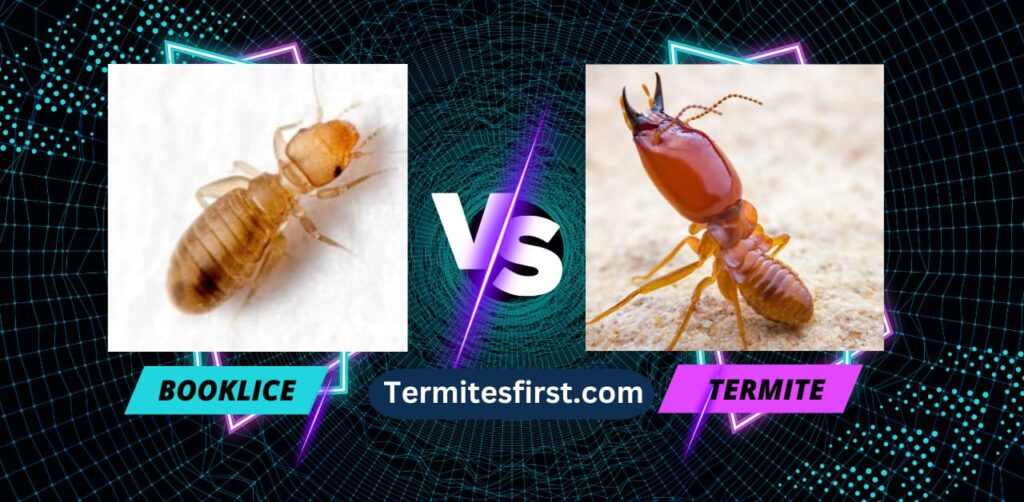
One of the bugs that look like termites is booklice. Booklice, also known as psocids, do not cause structural damage to homes or belongings. These tiny insects are primarily nuisance pests and do not feed on wood, fabric, or stored food items like some other pests do. They feed on mold, fungi, and organic matter found in humid environments.
Causes of Infestation:
Booklice are attracted to damp and humid conditions, which provide the ideal environment for their growth and reproduction. They frequently occur in moist environments like bathrooms, kitchens, and basements.
Risks:
While booklice do not pose any direct risks to human health or property, their presence can indicate underlying issues such as high humidity, water leaks, or mold problems. If their preferred food sources are abundant, they can multiply quickly, leading to larger populations.
Tips for Management:
To manage booklice and minimize their nuisance:
Improve Ventilation:
To lower moisture levels, properly ventilate rooms that are prone to excessive humidity, such as restrooms and kitchens.
Reduce Humidity:
To keep humidity levels in moist areas around 50%, use dehumidifiers.
Address Mold and Fungal Growth:
Promptly address any mold or fungal growth in your home to eliminate their food sources.
Keep Areas Clean and Dry:
Regularly clean and dry areas where booklice are found, such as kitchen counters, bathroom surfaces, and stored items.
Seal Entry Points:
Fill up holes and crevices around windows and doors to keep bookies out of your house.
Remember that booklice are harmless and do not require the same level of pest control as destructive insects. By addressing moisture issues and maintaining a clean and dry living environment, you can effectively manage booklice and prevent their populations from becoming problematic. If you have concerns about booklice infestations or need advice on managing humidity levels in your home, consulting with a pest control professional or a home inspector can be beneficial.
| Characteristic | Booklice | Termites |
|---|---|---|
| Physical Appearance | Tiny, soft-bodied insects | Soft-bodied insects, varying in color |
| Antennae | Antennae are segmented | Straight and beaded antennae |
| Waist | N/A (No distinct waist) | Broad and straight |
| Wings (Reproductive) | Some species have wings for flying | Both reproductive and worker termites have wings |
| Wings (Size and Shape) | Varies among species | Front and hind wings of equal size and shape |
| Eating Habits | Feed on mold, fungi, and organic matter in damp environments | Feed on cellulose (wood and plant materials) |
| Damage to Wood | Do not cause damage to wood | Consume wood for nourishment and nesting |
| Nesting Behavior | N/A (No nesting in wood) | Build intricate mud tubes and tunnels |
| Social Structure | Mostly solitary insects | Live in highly organized caste systems |
| Hazard to Property | Do not pose any property risks | Can cause severe and extensive structural damage |
| Prevention Tips | Reduce moisture in damp areas. Clean and dry infested areas. | Use termite barriers. Maintain proper drainage. Regular inspections. |
Springtails: Shedding Light on the Tiny Jumpers Damage
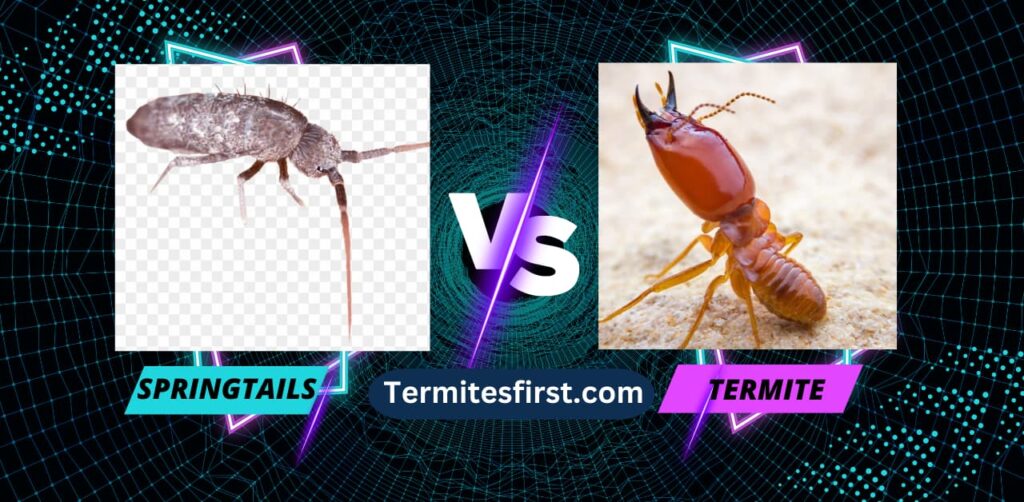
One of the bugs that look like termites is springtails. Springtails, also known as snow fleas or collembolans, are tiny, wingless insects that do not cause any significant damage to homes, structures, or belongings. . Instead, springtails primarily feed on decaying plant material, fungi, algae, and organic matter found in damp environments.
Causes of Infestation:
Springtails are attracted to moist and damp conditions, making them common in areas with high humidity levels or excessive moisture. They are frequently discovered in mulch, dirt, and other outdoor spaces. They occasionally go indoors as well, particularly during instances of torrential rain or flooding.
Risks:
While springtails do not pose any direct risks to human health or property, their presence can be a nuisance, particularly when they gather in large numbers. In some cases, they may indicate underlying moisture issues or mold problems in the home.
Tips for Management:
To manage springtails and minimize their presence:
Fix Water Leaks:
Address any water leaks or sources of moisture promptly to reduce damp conditions that attract springtails.
Improve Drainage:
Ensure proper drainage around your home to prevent water from pooling and creating ideal breeding grounds for springtails.
Remove Decaying Plant Material:
Keep outdoor areas clean and free of decaying plant material, leaf litter, and mulch.
Use Dehumidifiers:
Use dehumidifiers in damp indoor spaces to maintain humidity levels below 50% and deter springtails from migrating indoors.
Seal Entry Points:
Fill in any holes and crevices in your windows, doors, and walls to keep springtails out of your house.
Remember that springtails are generally harmless and do not require chemical treatments or extensive pest control measures. By addressing moisture-related issues and maintaining a clean and dry living environment, you can effectively manage springtails and prevent their population from becoming problematic.
If you have concerns about springtail infestations or need advice on managing humidity levels in your home, consulting with a pest control professional or a home inspector can provide valuable insights and recommendations.
| Characteristic | Springtails | Termites |
|---|---|---|
| Physical Appearance | Tiny, soft-bodied insects | Soft-bodied insects, varying in color |
| Antennae | Antennae are segmented | Straight and beaded antennae |
| Waist | N/A (No distinct waist) | Broad and straight |
| Wings (Reproductive) | Some species have wings for jumping | Both reproductive and worker termites have wings |
| Wings (Size and Shape) | Varies among species | Front and hind wings of equal size and shape |
| Eating Habits | Feed on decaying plant material, fungi, algae, and organic matter in damp environments | Feed on cellulose (wood and plant materials) |
| Damage to Wood | Do not cause damage to wood | Consume wood for nourishment and nesting |
| Nesting Behavior | N/A (No nesting in wood) | Build intricate mud tubes and tunnels |
| Social Structure | Mostly solitary insects | Live in highly organized caste systems |
| Hazard to Property | Do not pose any property risks | Can cause severe and extensive structural damage |
| Prevention Tips | Reduce moisture in damp areas. Keep areas clean and dry. | Use termite barriers. Maintain proper drainage. Regular inspections. |
Swarming Ants: Understanding the Annual Phenomenon Damage
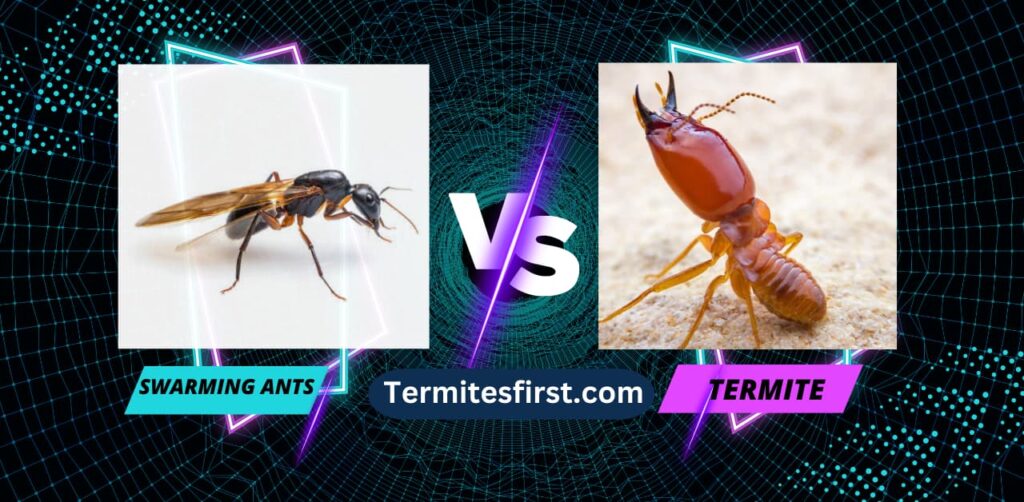
One of the bugs that look like termites is wsarming ants. Swarming ants, also known as flying ants, are not known to cause any direct damage to homes, structures, or belongings. Unlike some other pests, they do not feed on wood, fabric, or stored food items. Swarming is a natural part of the ant reproductive cycle, and the primary purpose is to establish new colonies. Once the mating flights are over, the flying ants shed their wings and continue their lifecycle as regular worker ants.
Causes of Infestation:
Swarming ants are not an indication of an infestation; rather, they are a natural and seasonal phenomenon. Typically occurring once a year, swarming takes place when ant colonies reach a certain size and maturity. Swarming ants on your property or nearby may not always indicate that you have an ant infestation inside your house.
Risks:
There are no immediate threats to human health or property from swarming ants. They are primarily concerned with mating and starting new colonies during the swarming period. After the mating flight, most of the flying ants die, while the ones that survive continue their life cycle in new colonies away from the swarm site.
Tips for Management:
To manage swarming ants and minimize their presence around your property:
Seal Entry Points:
Ensure windows, doors, and cracks in the walls are properly sealed to prevent flying ants from entering your home during the swarming phase.
Clean-Up:
If a large number of flying ants are present around your property after a swarm, you can use a broom or vacuum cleaner to clean them up.
Maintain Outdoor Lighting:
Consider turning off outdoor lights during the swarming period, as lights can attract flying ants.
Remember that swarming ants are a natural occurrence, and they are usually a temporary phenomenon. If you notice swarming ants near your home, it does not necessarily indicate an ant infestation indoors. However, if you have concerns about ants or other pests inside your home, seeking advice from a pest control professional can help address any potential issues and implement preventive measures.
| Characteristic | Swarming Ants | Termites |
|---|---|---|
| Physical Appearance | Varies among ant species | Soft-bodied insects, varying in color |
| Antennae | Elbowed antennae | Straight and beaded antennae |
| Waist | Narrow and pinched | Broad and straight |
| Wings (Reproductive) | Only reproductive ants have wings | Both reproductive and worker termites have wings |
| Wings (Size and Shape) | Front wings larger than hind wings | Front and hind wings of equal size and shape |
| Eating Habits | Varies among ant species | Feed on cellulose (wood and plant materials) |
| Damage to Wood | Do not cause structural damage | Can cause severe and extensive structural damage |
| Nesting Behavior | N/A (Swarming is for reproduction) | Build intricate mud tubes and tunnels |
| Social Structure | Live in colonies with different castes | Live in highly organized caste systems |
| Hazard to Property | Do not pose immediate property risks | Can cause significant structural damage if left untreated |
| Prevention Tips | Seal entry points during swarming. Address potential ant infestations. | Use termite barriers. Maintain proper drainage. Regular inspections. |
Conclusion:
In conclusion, it’s important to know the differences between pests that look like termites. Understanding their unique traits helps us handle them better. While carpenter ants, powderpost beetles, carpenter bees, acrobat ants, and springtails can be bothersome, they don’t cause as much harm as termites. Termites are the real troublemakers as they eat wood and can seriously damage our homes.
FAQ’s:
Termites are not directly harmful to humans in terms of biting or stinging. However, they may seriously harm timber houses, homes, and other structures. Termites are referred to be “silent destroyers” because they eat the cellulose found in wood, slowly destroying structures. Due to this deterioration, buildings may become less structurally sound, which might result in dangerous situations and expensive repairs.
Termites can be killed using various methods. Liquid termiticides are applied around the foundation, and termites get exposed to the chemical while tunneling through the soil, leading to their elimination. Termite baits are slow-acting toxins that termites carry back to their colonies, spreading the poison and killing the entire colony.
Yes, some termites have wings and can fly. Termites go through different life stages, and the winged form is known as “alates” or “swarmers.” These winged termites are reproductive individuals whose primary purpose is to leave their current colony, mate, and establish new colonies.
Termite droppings, also known as “frass” or “termite pellets,” have distinct characteristics that can help identify termite activity. These droppings are typically small, and granular, and resemble tiny grains or pellets of wood.
Identifying termites can be tricky, but there are some telltale signs to look for. First, keep an eye out for mud tubes along walls or foundations, as subterranean termites use these to travel between their nest and a food source. During swarming season, winged termites with straight antennae and four equal-sized wings may appear in large numbers.
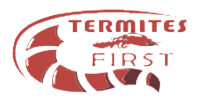
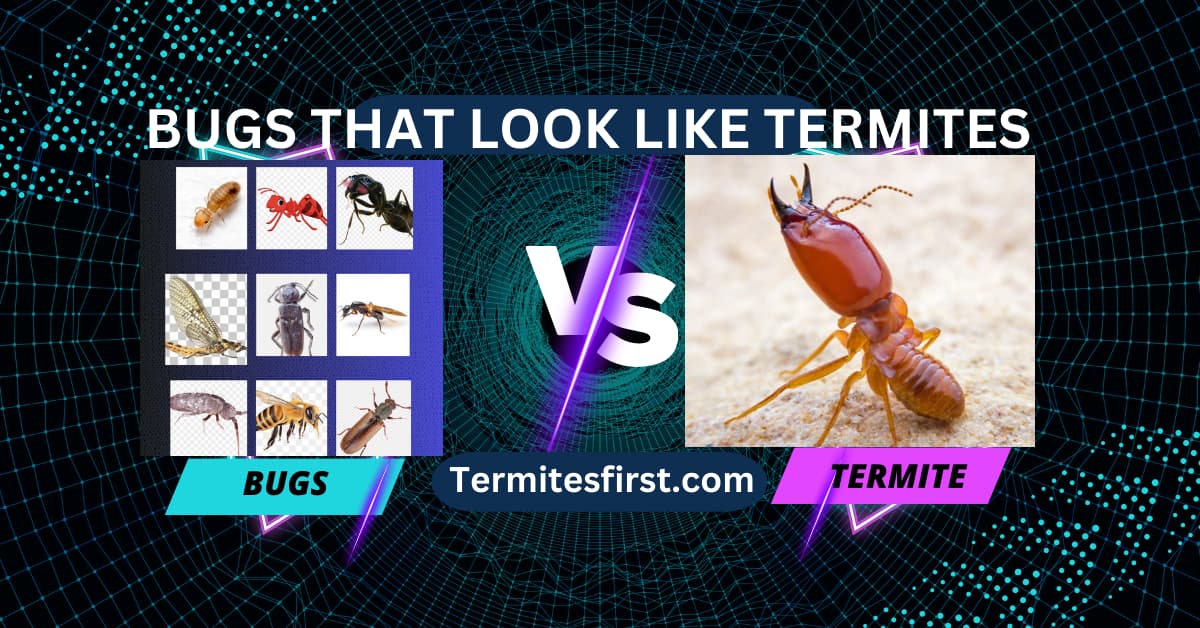
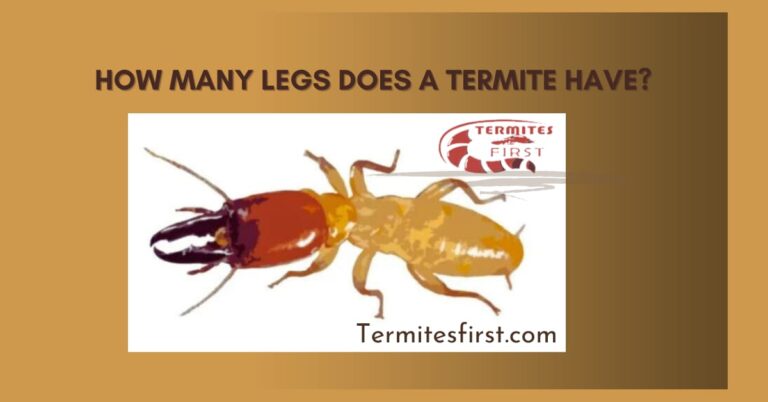
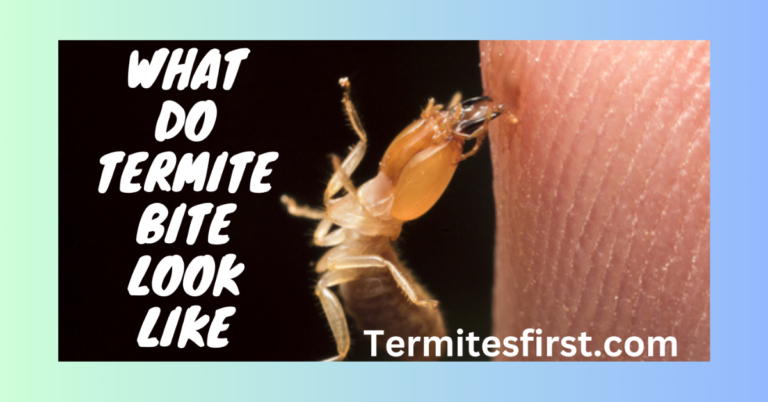
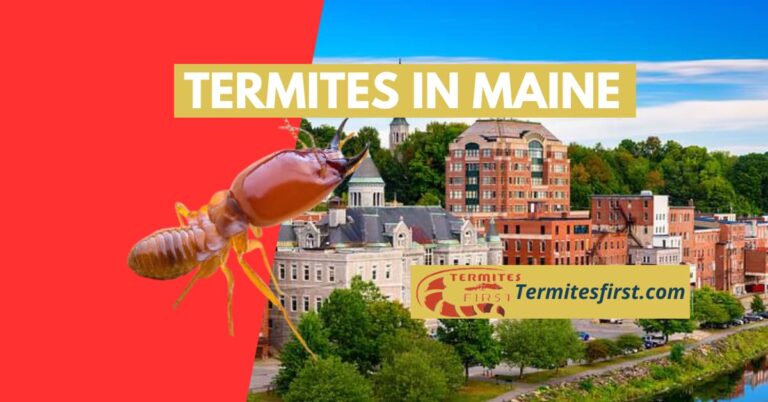
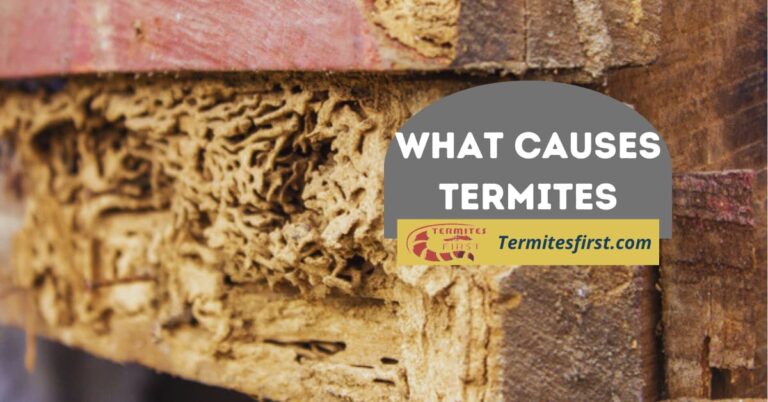
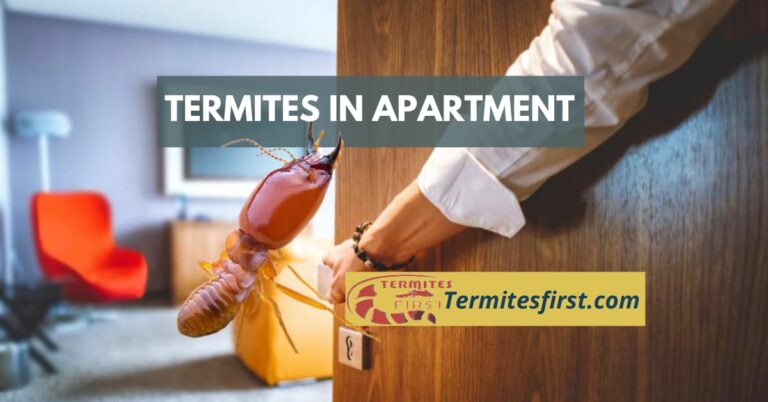
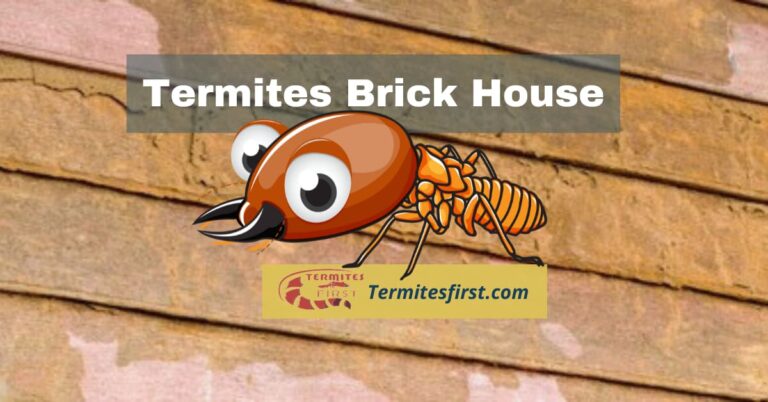
3 Comments